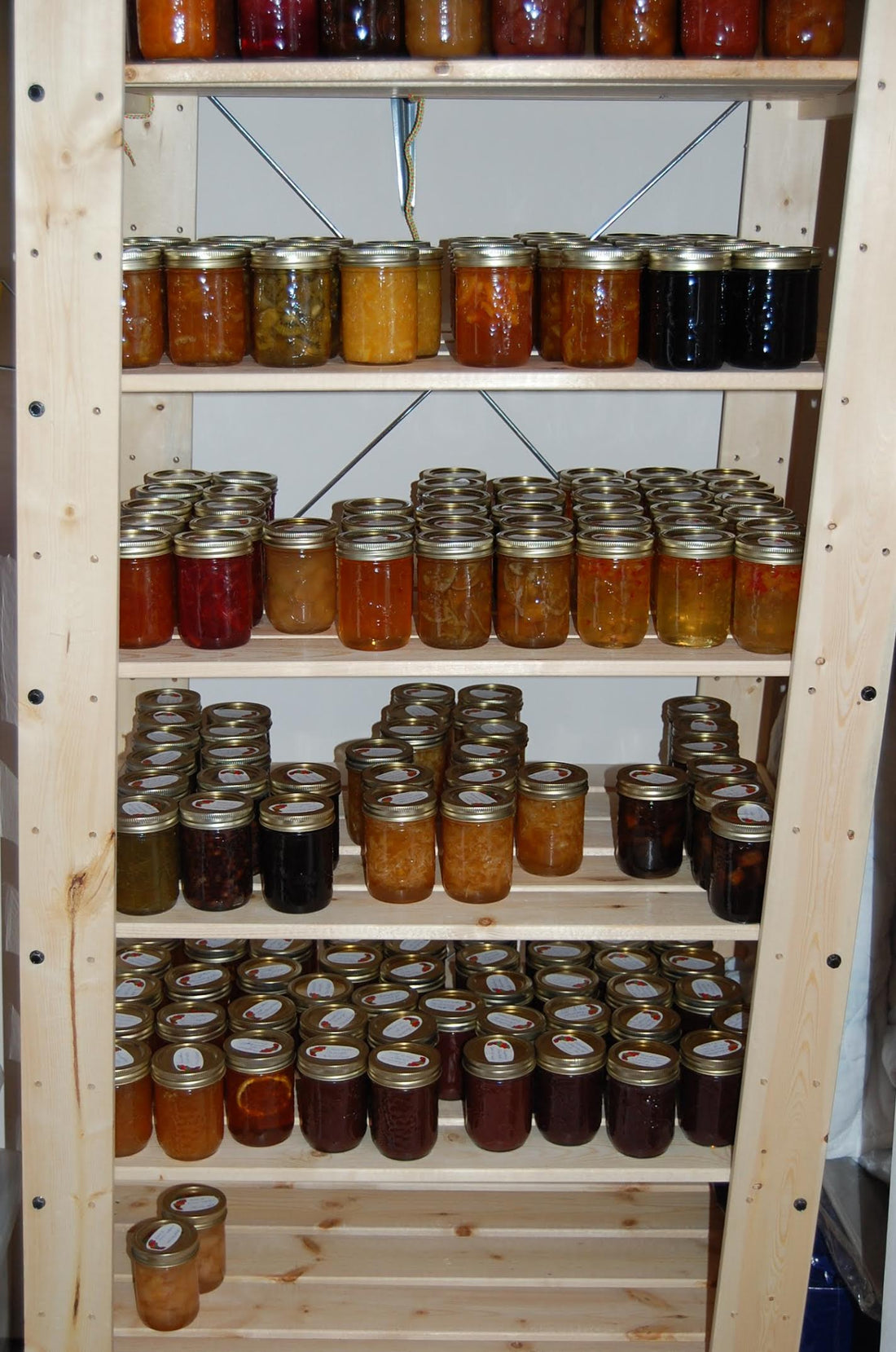How Home-Made Jam is Different than Commercial Jam
Home made jam is not made in huge batches, does not have additional preservatives, or colour enhancers, and doesn’t use corn syrup. The fruit is most often hand-cut. No adjustments are made to the taste or texture to ensure it is uniform from jar to jar, year to year.
At Jam Goddess, we make small amounts and many kinds of jams, jellies, marmalades, and lately, savoury products such as chutneys and relishes. Sometimes we run out of a flavour and there won’t be anymore until next season. Sometimes the crop fails and we don’t have any this year. But we try to have a large variety and we hate disappointing anyone.
I should add that we follow provincial guidelines for safe practice which will likely differ from some of the methods your grandmothers and/or mothers might have used. For instance, putting a layer of wax on top of the jam is no longer approved. The wax is porous and can allow the growth of microscopic organisms. Also, some things that were canned in the past are no longer considered safe such as the locally famous Best of Bridge anti-pasto recipe which is not acidic enough for safety. If you follow their books, the latest tells you to freeze the anti-pasto instead of canning it.
I never turn jars upside down first and have never figured out why anyone would do this. I cool the jars as quickly as possible according to the guidelines of getting food to a safe temperature in a four-hour window of time. I process low acid products according to USDA standards. And I don’t make things that require pressure canning. I am terrified to can meat but this is more from my memory of a jar of canned beef exploding one day at my aunt’s house. The smell – oh lord the smell. Not to mention cleaning up that exploded beef and broken glass.
In other parts of this site I will address safety more as well as provide references
Why do we Preserve Food?
Preserving the summer’s bounty is part of our DNA as humans. The season is too fleeting and the winter too long not to try to do something to hang onto those flavours. So as fall approaches, I think we all get some impulse, some instinct, to preserve and put away, or put up.
For me, so much is available year-round now, but no grocery store product compares to home-made jam. I love making it. It tastes wonderful, particularly in February. It sounds corny, but it really is Summer in a Jar. It also looks so pretty – the jars look like jewels on the shelf. And there is something so fundamental about it – taking the harvest and preserving it in delicious ways.
Methods of Making Jam
For a long time, I was interested in making jam that had more, and bigger, pieces of fruit. I read extensively and discovered methods of making jams that don’t use commercial pectin. The advantage of those methods is that you can often use less sugar. Also, the jams generally have a softer set than jams with commercial pectin. But not all jams can be made this way as many varieties of fruit do not contain enough pectin to set alone without help.
The Fruits
I think I have a high-quality product with depth of taste. I use the best quality fruit available to me. Most of it comes from BC and I buy it either from the growers or from one of the markets in Calgary. I have been known to drive to Kelowna to pick up the best pears I’ve ever encountered from Hazeldell Orchards (https://www.facebook.com/profile.php?id=100054592922750). Crabapples are obtained from a variety of sources and some people are kind enough to pick them for me. I pick the rhubarb myself from my cousin’s farm hear Bentley, and I get as much as I can locally. And by “local” I mean I drive to Medicine Hat to get Evans Cherries and Picture Butte to get Haskaps. (Blue Vista Orchards - https://bumbleberryhome.com/pages/blue-vista-farm-store
The quality of fruit varies depending on how much rain or sun it received, the lateness of the spring, and the quality of the tree, and maybe, the tree next to it. Sometimes the cherries are big, and sometimes they are smaller. Some rhubarb is redder than others. Strawberries can have a lot of water or not so much, and trust me, this will affect the finished product.
Fruit is mostly cut by hand and cooked in small batches. The reason to do small batches is simple - less time overall on the heat source results in preservation of the fruit flavour and avoids caramelizing the sugar.
The variability in the fruit is half the fun of homemade jam. It’s like wine – the vintages will vary year to year, even sometimes batch to batch. We don’t care if it’s different from last years because we will never attempt to “commercialize” the jam by running it through processes to make sure it tastes the same every year. My sister and I still talk about the best apricot from the summer of 2015. And I know the best crabapple comes from a tree in Cranston.
Why buy Homemade Jam?
Many of us have all the stuff we’ll ever need and now focus more on small indulgences. High quality jam is such an indulgence. It is comestible, does not require dusting, and it makes a great small gift. Also, it’s a high impact snack – you don’t need very much of it at one time to satisfy.
Finally
So, try some jam. Try it in ways you’ve never tried it before. Read about some of the things you can do with jam other than eat it on toast – not that there is anything wrong with toast.
And I truly hope you enjoy eating it as much as I enjoyed making it.

